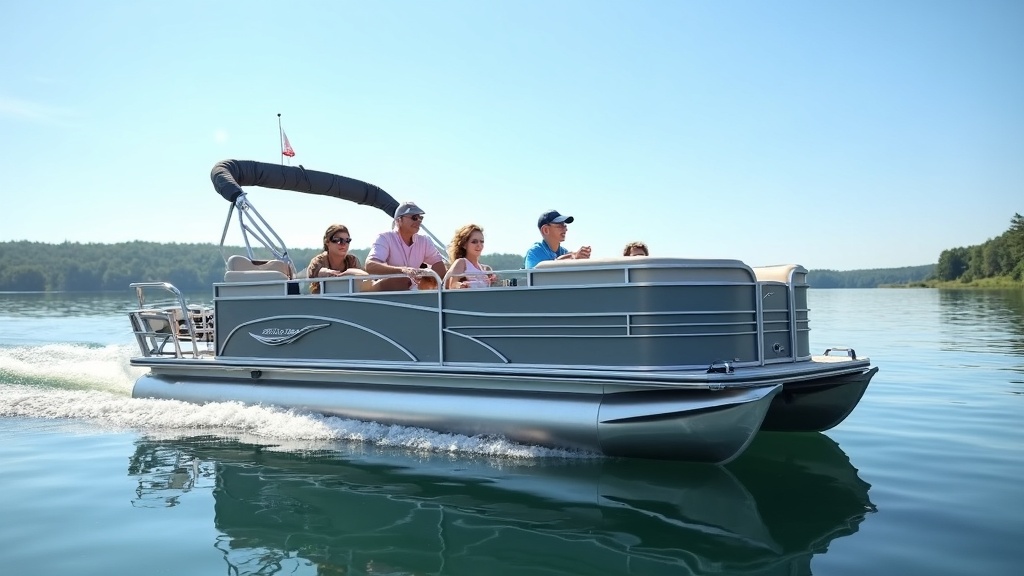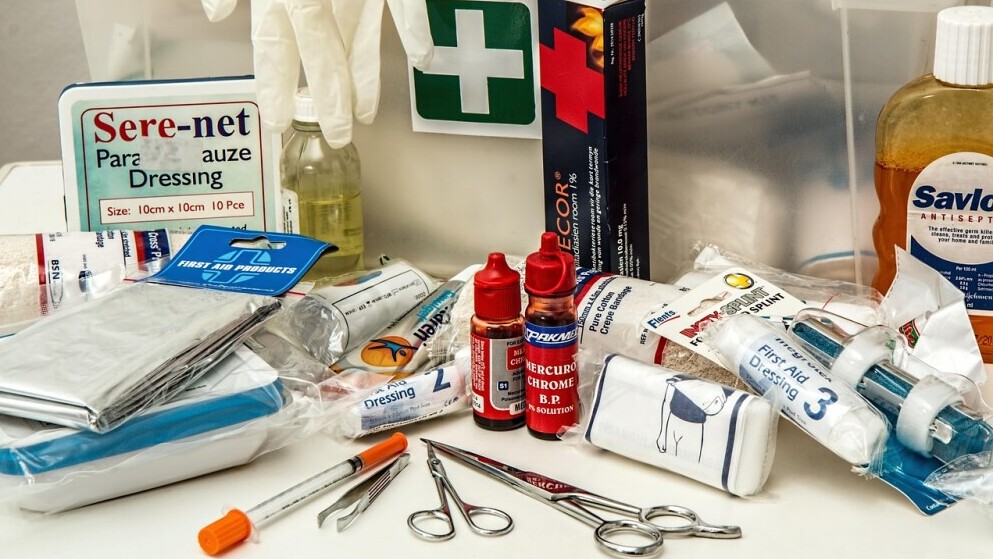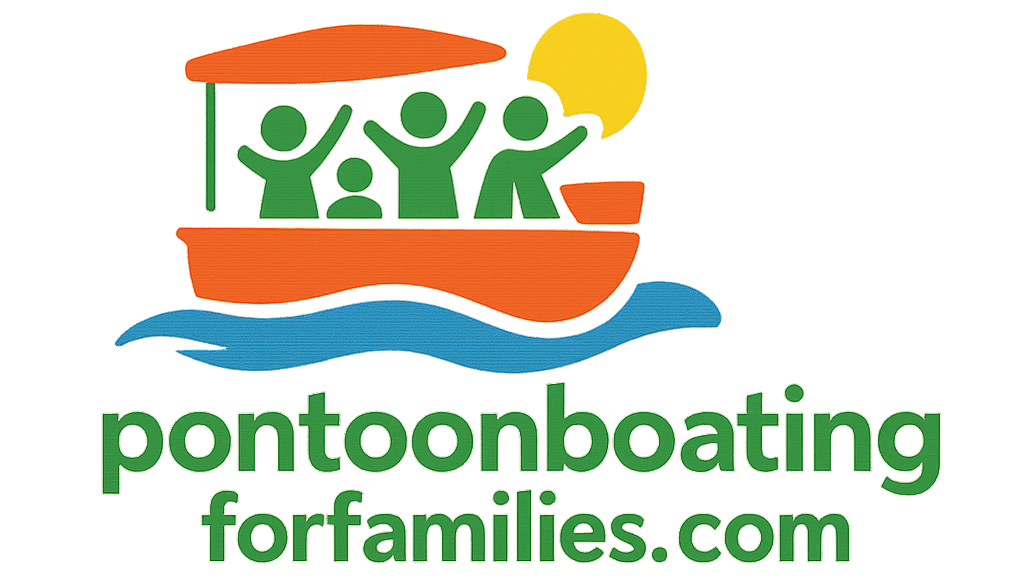Pontoon boats have grown into a mainstay for families looking to make the most of their time on the water, blending fun, safety, and convenience for group outings, fishing trips, or simple relaxation.
I’ve spent countless summers with loved ones on pontoons, and there’s nothing quite like gliding across a calm lake on a craft built for comfort and balance.
The history of these versatile boats, especially the advances in hull technology, shapes how we enjoy them today.

The Early Days of Family Pontoon Boats
The story of family-oriented pontoon vessels begins in the early 1950s, when basic rafts and homemade platforms were the popular way to get groups onto the water. Early designs had wooden planks stretched across old metal barrels, providing a passable yet shaky ride. These early pontoons were built for function instead of looks, with straightforward hulls that kept you afloat but didn’t promise much in the way of speed or efficiency.
Older boating fans often recall just how slow these first pontoons were-and how challenging they could be to steer. While not what anyone would call elegant, they marked an important step forward. With an affordable price tag and a focus on stability over speed, they opened up lake life to families on a budget. That flat, rectangular layout gave us the core features we still associate with pontoons: lots of open space and impressive balance on the water.
Aluminum Hulls Change the Game
One of the most meaningful changes happened in the mid-1950s, when aluminum pontoons (sometimes called “logs”) replaced homemade barrels and wood. Aluminum made pontoons lighter, more durable, and a lot easier to build in a variety of sizes. That lower weight also made them easier to tow behind smaller cars-an improvement that helped make impromptu weekend lake trips a reality for more families.
The switch to aluminum hulls meant boats could take more of a beating and required much less upkeep. Families no longer had to stress over leaks or constant repairs. Pioneers like Harris FloteBote and Lowe got the ball rolling, launching competition between makers to boost hull performance, comfort, and safety in new ways.
Major Hull Innovations in the 1970s and 1980s
Pontoon boat builders spent the 1970s and 1980s getting creative with hull shapes and materials. Twin-tube pontoons were the standard, but some manufacturers started to dream up new ways to give pontoons better speed, handling, and comfort.
Redesigning the Hull Profile
During this stretch, hull profiles started to take on a new look. Designers shaped the nose cones at the front of the pontoons, helping the boats glide easier by slicing through the water with less drag. This bit of reshaping provided a real boost, making it much simpler to steer and accelerate-even when hauling a crowd or a stack of coolers. Suddenly, families could go faster and didn’t have to worry as much about wind or choppy wakes from bigger boats.
The Rise of the Third Tube
The arrival of the triple-tube, or “tritoon” hull, in the 1980s brought about a massive leap forward for family pontoon boating. By putting a third, central pontoon under the deck, manufacturers gave boats extra balance and lifting power. With this new design, pontoons started to handle more like sporty runabouts, making it possible to pull tubes and water skiers or zip across the lake briskly while still feeling safe.
The tritoon setup also offered extra lift, meaning less drag in the water and visibly improved fuel efficiency. That made a real difference for families planning lengthy cruises or larger gatherings out on the water.

Performance Hulls and Modern Designs Take Over
Pontoon boat hulls continued evolving throughout the 1990s and 2000s. Many families came to view their pontoon almost like a “floating living room,” complete with built-in grills, plush furniture, and bigger engines. The demand grew for boats that could do more and handle rougher water.
Hydrodynamic Upgrades
Builders started tweaking the underwater shapes of the pontoons themselves, aiming for less resistance and a silkier ride. The undersides gained lifting strakes-angled metal fins welded onto the tubes, to help the boat rise up slightly at high speeds. From my own experience on boats both with and without strakes, it makes a real difference. Boats with these features move much more crisply, picking up speed and turning with a sporty feel.
Big industry names like Bennington, Premier, and Manitou upped their game designing these hull tweaks. Each company brought their own twist-unique tube shapes, proprietary materials, or special reinforcements-all to give families the edge in ride quality, safety, and fun on the water.
Bigger Tube Sizes and Stronger Builds
The typical tube diameter climbed from about 23 inches decades ago up to 25 or even 27 inches on today’s models. Bulkier tubes offer more buoyancy and distribute weight more evenly across the deck. If you’re planning to bring lots of people or equipment onboard, those wide tubes give you that extra sense of security. Some makers beefed up tube and deck connections to manage more horsepower, letting adventurous families pull wakeboards or dash out quickly to the best fishing spots.
Advantages of New Hull Improvements for Families
Modern pontoons are now engineered to handle all kinds of activities while keeping comfort a priority. Thanks to years of hull innovation, families can seamlessly go from peaceful sunset rides to laughter-filled tubing sessions-no boat swap required.
- Stability: Updated hulls are rock-solid, making movement onboard safe for young kids or elderly relatives.
- Performance: Tritoons and refined hulls allow for zippier acceleration, sharper turns, and secure towing of tubes or water skiers.
- Fuel Efficiency: Smoother hulls slice through water, burning less fuel over a long day or weekend outing.
- Room to Roam: Big, supportive hulls mean larger decks, making it easy to set up lounging areas, small grills, or even slides for the kids.
Common Questions About Pontoon Boat Hulls
People often have questions when picking the right pontoon for family fun. Here are a few things I get asked the most:
Question: Why are pontoons trending so much among families?
Answer: Pontoons bring safety, tons of space, and easy handling to the table, which matters when you’ve got kids or a crowd. Today’s hull designs make them reliable in changing conditions with comfort to spare.
Question: How does a tritoon compare to a standard two-tube?
Answer: Tritoons move better at high speed, carry heavier loads, and generally provide a more stable, fun ride. If you want to tow tubes or just travel with a big group, a tritoon is a smart choice.
Question: Do bigger tubes really matter that much?
Answer: Absolutely—bigger tubes keep your ride steadier and better balanced. If you like having a lot of people or gear onboard, those larger tubes mean more peace of mind for everyone.
Smart Tips for Picking Your Next Pontoon Hull
If you’re shopping for a new family pontoon, keep these points in mind:
- Activities Matter: Bigger hulls and extra tubes are great for pulling water toys or running fast. Twin-tube setups work well for more mellow outings.
- Material Quality: Top-notch aluminum hulls outlast most options and save you time and money on upkeep.
- Safety First: Features like welded-in deck mounts, strong rails, and reinforced tubes help keep everyone safe, particularly if you’re boating with kids or pets.

Don’t hesitate to ask your local dealer for a test ride. Even the best hull design can feel a little different under real lake conditions compared to how it looks in the lot. That hands-on experience will help you find what really suits your family’s style.
The Future of Pontoon Hull Design
The pontoon scene keeps changing. We’re starting to see hybrid and electric hulls catch on for those who want to cruise with a smaller carbon footprint. Manufacturers are also dreaming up new hull profiles that tackle rough water with even more confidence. Other advances include systems like digital trim, power steering, and hull sensors that help make every ride smoother and safer, giving both rookies and seasoned drivers more control and comfort.
Staying sharp on these developments means you can squeeze every bit of joy out of your days on the water, enjoying safe and unforgettable moments with your crew. With the right hull design, everything from launching to packing up at the end of the day becomes smoother and more enjoyable, ensuring every memory made is a great one.
**Here’s a little transparency: Our website contains affiliate links. This means if you click and make a purchase, we may receive a small commission. Don’t worry, there’s no extra cost to you. It’s a simple way you can support our mission to bring you quality pontoon boating content.
